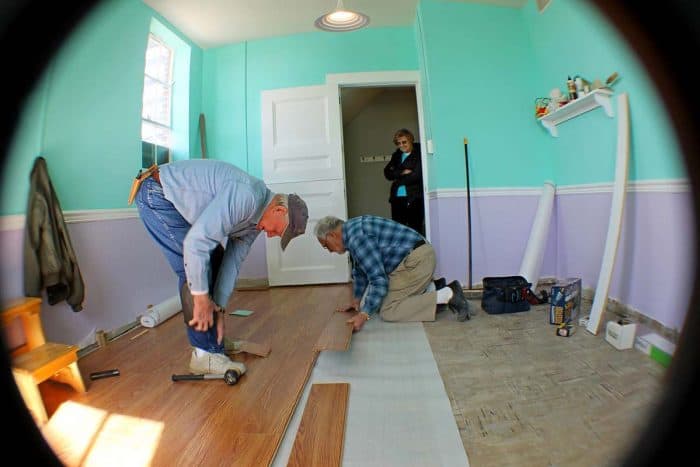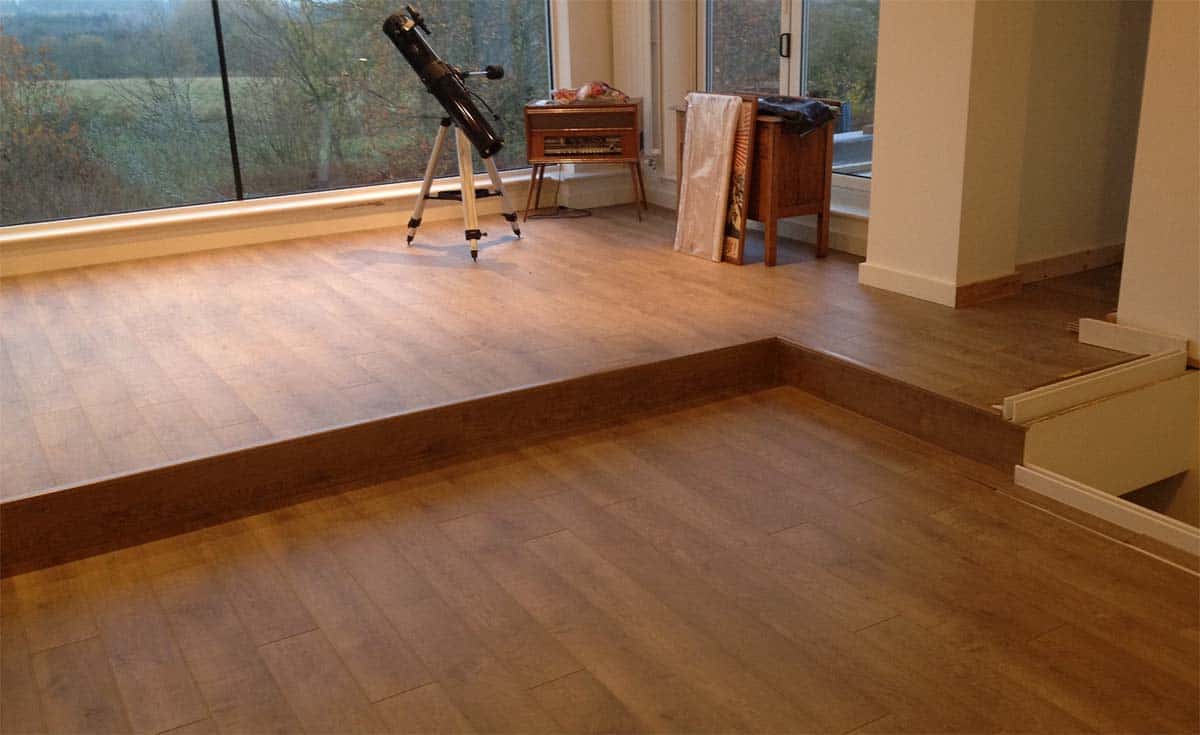Read these tips to make sure your laminate floor looks great and lasts well.
1. Check the Skirting Boards
If you want to retain the skirting, you’ll have to remove it during installation and then re-lay it. Some older houses have a beading at the bottom of the skirting board, and this will need to be taken up.
2. Check Door Clearances
The door needs to be able to clear the new floor, so check that there is a reasonable gap underneath the door. If necessary, take the door off and plane it down.
3. Prepare the Subfloor
Depending on whether the current floor is timber or concrete, you’ll need to select the correct damp-proof membrane and/or underlay. There’s a useful table to guide you here: http://www.wickes.co.uk/how-to-guides/how-to-lay-laminate-flooring. And make sure the existing floor is clean and has no protruding nails.
4. Lay the Flooring
Lay the planks lengthways, in parallel with the longest wall. Start by placing a plank with its “tongue” edge facing the wall. Now lay the first row, checking that it’s straight.
Grey laminate flooring will look fresh and sophisticated in a kitchen or bathroom, but because they often have moisture-laden air these rooms need a little more work – you’ll need to use wood glue on all the joints.
5. Use a Tapping Block to Get a Tight Fit
The planks have tongue and groove fittings, and these lock together tightly when you tap them, so get a long tapping block to make the job easier and ensure a snug fit.
6. Space Out the Gaps
Use plank spacers to create an expansion gap between the wall or skirting board and the floor. You may need to cut a hole if you have radiator pipes in the room.
7. If You Have to Cut, Wear a Dust Mask
Virtually any kind of saw can be used to cut laminate. However, be aware that this may create a fine dust. It’s better to be safe than sorry, so use a dust mask.
8. Lay the Last Board
Measure how wide it needs to be by laying a plank on top of the gap and marking it. Then put the plank in – you may need to use a pull bar and hammer to get this last one in place.


